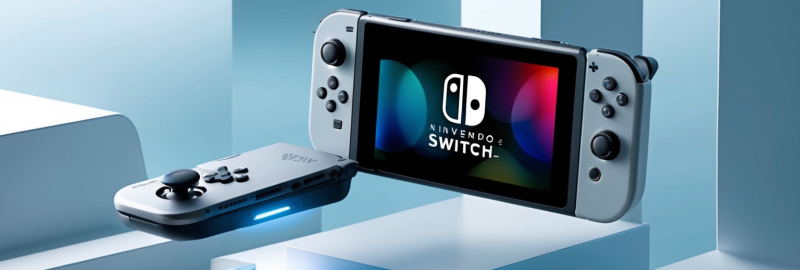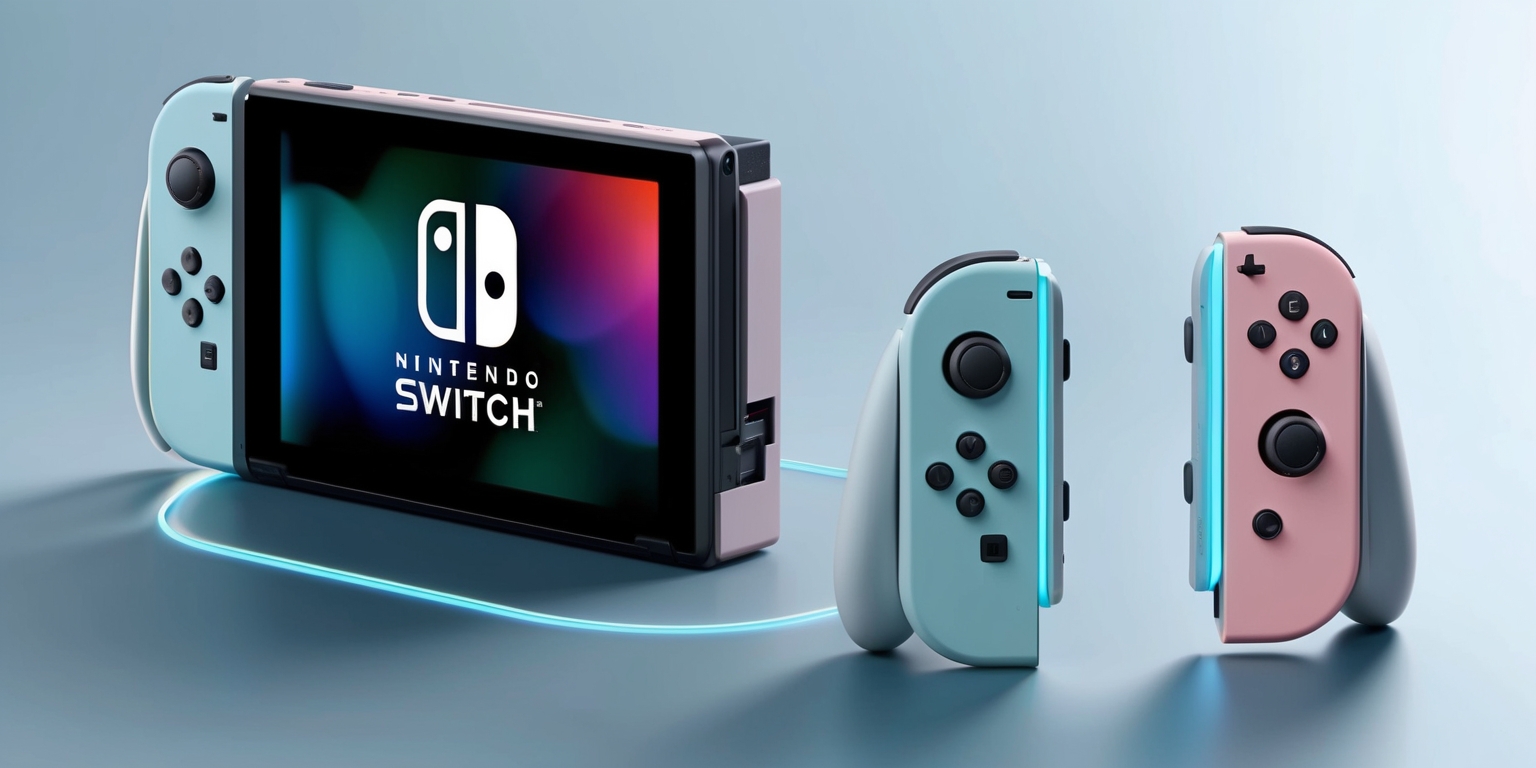
The latest iteration of Nintendo's console innovations brings a playful twist to traditional gaming controls, merging classic gameplay with novel interactions that invite both veterans and newcomers alike to explore new horizons. With the introduction of Mouse Mode, users can experience games in unprecedented ways, using the Joy-Con controllers reinvented as mice to provide precise and dynamic inputs. This evolution promises immersive opportunities that challenge conventional control schemes while retaining familiar elements beloved by longtime fans. In this evolving landscape, gamers now have the freedom to choose between traditional gameplay and innovative control alternatives, ensuring a versatile and engaging experience across a range of upcoming titles. The transformative potential of Mouse Mode sets the stage for an era defined by creativity, flexibility, and interactive fun.
Innovative Controller Integration
The revolution in how players interact with their Nintendo console is epitomized by the dual functionality of the Joy-Con controllers. Now, with Mouse Mode, these controllers double as a pointing device when held sideways, opening up a host of new gameplay possibilities. This innovation is not merely about hardware adaptability—it symbolizes a shift in design philosophy whereby traditional button-based controls merge with gesture-based precision. Developers have embraced this change by integrating alternative control schemes into their game designs, ensuring that mouse functionality is available as an option without compromising the conventional experience. By refining user interactions through adjustable settings and intuitive setups, the Switch 2 aims to cater to diverse player preferences while emphasizing the importance of fluidity and precision in modern gaming.
Expanding Gameplay Dynamics
The transformation brought about by Mouse Mode extends well beyond the physical hardware, influencing gameplay dynamics across a spectrum of titles. This new mode of input introduces unique challenges and opportunities for game mechanics, particularly in titles centered around precision movements and fast-paced action. When players choose the mouse-like functionality, they encounter enhanced aiming and navigation benefits that add layers of strategy and skill to the gaming experience. Game designers have reportedly been fine-tuning this approach, ensuring that the transition between traditional and mouse controls is seamless and appealing. Moreover, the optional nature of Mouse Mode means that gamers can experiment with a control scheme that best suits their style, emphasizing flexibility without forcing a one-size-fits-all solution on players.
Customization and Optional Interactivity
A particularly captivating facet of the new console offering is the level of customization available to its players. With Mouse Mode integrated into a variety of titles, gamers are no longer bound by a rigid control structure. Instead, they are encouraged to tailor their playstyle to best suit individual game challenges, ranging from intricate puzzles to adrenaline-fueled action sequences. The mode is designed to support both traditional inputs and the innovative use of Joy-Con controllers as a mouse, ensuring that even those who remain cautious about unorthodox methods can revert to standard play. This flexibility allows developers to experiment with rich gameplay variations without risking the alienation of parts of their audience. As a result, the console’s ecosystem now embraces a robust culture of personalization and adaptive interactivity that encourages experimentation.
The Landscape of Compatible Titles

The evolving library of games designed to take full advantage of Mouse Mode presents an eclectic mix of genres and experiences. Early reports suggest that a range of titles—from expansive role-playing adventures and strategic epics to party games and innovative mini-games—have been crafted to incorporate this mode. Notable examples include major franchises adapting their gameplay mechanics to offer both classic control schemes and Mouse Mode alternatives. This inclusivity speaks to a broader commitment on Nintendo's part to ensure that every type of player finds engaging content, whether they favor pixel-perfect precision or broader, more dynamic movements. As time progresses, additional titles are expected to announce Mouse Mode functionality, constantly expanding the horizon of gaming possibilities on this advanced console platform.
Embracing Novel User Experiences
The integration of Mouse Mode reflects a forward-thinking approach to user experience design, one that prioritizes adaptability and intuitive functionality. Gamers are now invited to experience a game from dual perspectives—one that honors the traditional methods of play and one that introduces novel mechanics to handle in-game actions with increased precision. This dual capability is particularly beneficial in scenarios where pinpoint accuracy can elevate the overall impact of gameplay, especially in titles that require timed responses or delicate control balance. By offering an optional system that does not force a learning curve upon the casual audience, Nintendo ensures that every player can select the mode that suits their personal interaction preference. This innovation paves the way for more immersive environments where the line between physical input and digital expression is artfully blurred.
Design and Aesthetic Considerations
Beyond functionality, the creative spirit of the console's designers is evident in how Mouse Mode has been visually and aesthetically integrated into the gaming fabric. The visual cues associated with the mode—such as on-screen pointers and customizable cursors—have been styled to complement the underlying game art rather than distract from it. This careful attention to presentation means that even as players toggle between traditional and Mouse Mode inputs, the seamless visual integration maintains an immersive atmosphere within the game world. The thoughtful melding of hardware innovation with keen artistic direction reveals a broader strategy aimed at enhancing user immersion. Designers have successfully achieved equilibrium between contemporary elements technological convenience and the time-honored aesthetic appeal of Nintendo’s signature gaming experiences.
Versatility across Game Genres
Mouse Mode is not a one-trick feature limited to a single genre; rather, it serves as a versatile tool that enhances gameplay experiences across an array of different titles. This capability is particularly significant in games that benefit from a mix of traditional inputs and precision control. For instance, in strategic games that require delicate cursor navigation, the mouse-like functionality can play a critical role in enabling players to manage intricate details effortlessly. In more action-oriented experiences, precision inputs contribute to smoother targeting and fluid interactions. As titles like Metroid Prime 4, Civilization VII, and party games evolve with this new mode, the console ultimately broadens its appeal by ensuring that every genre retains a core sense of familiarity while being enriched by innovative control choices.
Adapting Established Franchises
A noteworthy aspect of the new Mouse Mode is how it enhances established franchises by breathing new life into familiar gameplay styles. Iconic series are now being revisited with update packages that incorporate mouse functionality, ensuring that veteran fans enjoy enhanced control precision and fluid gameplay without altering the essence of the original titles. This careful adaptation demonstrates a respect for tradition while encouraging experimentation with fresh interactive forms. In certain beloved titles, alternative game modes specifically designed for this control method offer additional layers of strategy and engagement. The integration has been thoughtfully implemented to allow players to toggle between control preferences, thereby preserving the integrity of the classic experience while simultaneously adopting a forward-looking design philosophy.
Innovative Additions in Party and Mini-Games
Expanding its breadth, the new control interface has found a charming application in party and mini-games, where the effortless precision of Mouse Mode can elevate simple fun into nuanced competition. Titles such as Super Mario Party Jamboree feature dedicated modes or unique mini-games that exploit the strengths of this updated input method. These segments are crafted with the intention of providing short bursts of high-energy excitement, engaging both individuals and groups in fresh, interactive challenges. The addition of Mouse Mode in these contexts brings a It infuses the gameplay with vibrant energy and unexpected twists, inviting players to experience familiar party game atmospheres with new layers of strategy and control. The thoughtful infusion of technological innovation into lighthearted contexts underscores Nintendo's commitment to multi-faceted enjoyment across its gaming portfolio.
Developer Insights and Future Prospects
Initial insights from game developers indicate that the incorporation of Mouse Mode into the Switch 2 heralds a period of creative exploration and experimentation within the development community. By allowing optional use of mouse-like controls, creators can experiment with hybrid gameplay mechanisms without compromising traditional frameworks. This dual approach is particularly appealing when considering the potential evolution of action sequences, strategic planning, and puzzle solving. The enhanced control dynamics have opened up avenues for smoother, more responsive player actions. Developers are now actively brainstorming future titles and updates that will push the boundaries of how interactivity is perceived. Anticipation grows as this feature is expected to mature, potentially influencing design decisions across subsequent console iterations and expansions within the gaming ecosystem.



Leave a comment
Your comment is awaiting moderation. We save your draft here
0 Comments